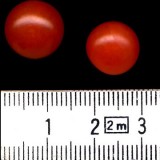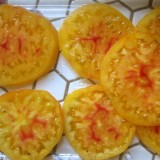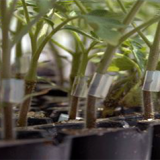
If you, like me, managed to kill all your tomatoes this summer you might want to try grafted tomatoes next season. Grafted tomatoes benefit from pathogen resistant rootstock (Maxifort is the most common rootsock variety).
A literature review “Yield and fruit quality of grafted tomatoes, and their potential for soil fumigant use reduction. A meta-analysis” by
Grafted tomatoes show promise to reduce the usage of various soilborne pathogen treatments, with 33% of commercial tomato rootstocks either resistant or highly resistant to seven or more common soilborne pathogens. Our approach integrated trial data from around the world, though limitations in available data complicated our analysis of relationships between some experimental variables and fruit yields and quality.
While this research focused on commercial growers I suspect grafted tomatoes might be a good option for us backyard tomato enthusiasts. If you, like us, lack the space to rotate your tomato growing year to year, pathogens can build up in the soil. Grafted tomatoes, while not a magic pill or an excuse for poor soil stewardship, might be a worthwhile experiment.
I attempted to graft my own tomatoes a few years ago and failed miserably. I would recommend outsourcing this task unless you’re a seasoned garden geek with a greenhouse.
The research also showed that there’s little difference in taste between grafted and non-grafted tomatoes,
Concerns that grafting might contribute to inferior fruit quality (pH, titratable acidity, total soluble solids, lycopene, vitamin C, firmness, “taste”) seem unfounded in general, though isolated cases show dramatic differences.
There’s more work needed to find the optimal rootstock/scion combo.
Have you tried grafted tomatoes? Leave a comment with your results.
Support Root Simple
Kyuuto! Japanese Crafts!: Woolly Embroidery: Crewelwork, Stump Work, Canvas Work, and More! We translated the cutest Japanese patterns we could find to bring you the appeal of authentic Japanese content with the ease of English instruction. The result is such a treat. With Woolly Embroidery, learn how to add stunning designs to clothes and home accessories using simple crewel, stump work, canvas work, and other embroidery techniques.







Did I miss the update on your backyard project?
I need to post an update. So far the patio is done but there’s still much work to do.
Hi there, we had some success growing grafted tomatoes in the edible garden at NHM. We’d been struggling to combat root knot nematode in the raised beds and tomatoes were always hit hardest. We grafted half a dozen varieties on to maxifort rootstock, then planted them out with a couple non-grafted (but nematode resistant) control plants. Happy to report that most of the grafts are still happy and producing! The non-grafted plants pooped out mid-summer. I’d call that a grafting win!
We tried Territorial’s grafted tomatoes and peppers a couple of years back. I was really excited about it, having limited success with solanaceae in our cool, mildew-inclined SF Bay Area microclime.
Unfortunately, those that didn’t split at the graft union just failed to thrive here in Fruitvale.